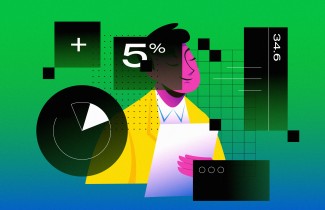Shaping the Future of Global Business Education in a post-COVID-19 world
What types of skills and capabilities are needed for the new leadership? What are the new roles and challenges for business schools?
Last Monday I participated in the webinar «Shaping the Future of Global Business Education in a post-COVID-19 world» organized by EGADE Business School. I had the opportunity to talk with John Quelch, Dean of the Miami Herbert Business School, moderated by Juan Enciso, professor at the EGADE Business School. The following text summarizes the notes of my intervention following the 3 questions raised by Juan Enciso.
1. Now that we are in the process of adapting to the Post-COVID-19 era. What would be the challenges and opportunities of business in general?
From my point of view is essential to understand the new business landscape embedded in the new social landscape and the following would be some key characteristics:
- There is a large consensus about the idea that this crisis will transform almost everything for the next years or decades. Half provocation, half joke some people call the “Post-COVID-19 era” as the Coronacene.
- Crisis will last longer than a few months. This will generate public health uncertainty for perhaps 1-2 years (some predictions estimate a rather longer period), and the practices of test, tracing and isolation should be part of our daily life. We are going to develop as individuals and society a precautionary mindset.
- Behavioral and social changes will last for longer periods or will be permanent: social distance, extreme caution with public health issues, travels, public events …
Examples of some attributes relevant for the «new normal»:
- Social (physical) distancing: We will start to restrict our physical relations to personal networks (this study suggest that could be the most effective strategy to avoid contagion); the openness of our communities will be reduced at least in the physical environments reversing a trend from last decades.
- Remote and digital work: It seems one of the clearest primary change and will have several implications as new mobility patterns, the need of new domestic spaces (for work and to make compatible work and family life), or new rituals and protocols for meetings and teamwork.
- Safe mobility: Alternative scenarios could be feasible based in private cars in one side or in bikes in the other. Are we moving to more car-oriented cities or pedestrian/bike-oriented cities?
- Escaping the city: For people using intensively remote work emerges the possibility to move to suburban areas with less density and larger homes (anecdotical evidences and some speculations suggest that this pattern is close to emerge). This could promote less-dense cities and larger suburban (sprawl) areas but with less commuting than expected in the pre-COVID-19 world.
The above behavioral and social shifts will promote dramatic systemic consequences:
- Strong social, cultural and economic changes lasting for a long time.
- Great uncertainties in our forecasts about the future … the value of classical strategic planning will be reduced, and we will need alternative ways of thinking and planning about the future.
Challenges for business:
- Strong shifts in the way that products and services are built (including changes in supply chains) and delivered to customers. We could select examples in almost any sector from retail or restaurants to industrial manufacturers … or universities …
- We don’t know when the post-COVID-19 starts … probably the transition from the acute phase (now) to the new normal will take 1-2 (or more) years (depending of the existence of effective treatments and vaccines). So, we have to manage this “long crisis” at the same time that we prepare for the future, taking into account a double uncertainty: about the duration and course of the crisis, and about the post-COVID-19 future.
- Acceleration of the future. Probably most of pre-COVID-19 foresights were right but changes will occur faster and will be here earlier. A very clear example are the universities (digital education is not more a secondary option).
- Collaboration both inside organizations and in external ecosystems. Only collaboration allows to maintain the pace of change we need to adapt continuously in an uncertain world. Collaboration is more about a new culture, including permission, and shared standards, objectives and incentives, than to changes in the structure of the organization.
2. Once we identify those challenges and opportunities, then what types of skills and capabilities are needed for the new leadership?
New mindset:
- Leading and managing under extreme uncertainty.
- Resilience, in the sense of being ready and able to react to any unexpected change to keep the stability of our organizations and business activities at the same time that we continue to provide value to our customers and stakeholders.
- Extreme agility and collaboration. Conventional organizations are robust but slow and conservative, and probably we need now fast decisions and the ability to make radical changes (both in timing and topics).
- Digital mindset: a combination of skills to use effectively digital tools and digital culture to be able to manage relationships and flows of information in digital / hybrid contexts.
New skills:
- Our new innovation and process toolbox that needs to be agile, creative and effective and should include agile methodologies; digital skills; strategic / service design …
- Team and inclusive leadership. We need to make diversity work in an effective and positive way because collaboration is only useful with diverse teams.
- Acceleration of the data & AI era: We need skills to understand this new paradigm where the core of any organization is powered by large-scale data exploited by AI algorithms that generate continuous business intelligence. This deep understanding should allow us to develop effective strategies for our organizations.
- Complex systems analysis and decision making. The pandemic shows us the very nature of wicked problems. Most of our relevant problems are wicked in the sense that there is not a unique approach to understand them and any action has necessarily positive and negative consequences … really, they are chronic and have not a final solution. So, we need cognitive tools to analyze and make significative decisions in complex contexts where most of the challenges are wicked.
3. And, what are our own challenges and roles as business schools? How are we preparing ourselves to effectively offer the development of those new skills? What is our new value proposition?
1. First, we would show our capacity to respond in an effective way to the crisis and to the new normal. If we are able to do that, we will have credibility in the future.
2. Moving to digital education
- Remote teaching (especially the emergency response) and online education are not the real digital education, or at least they do not develop the complete potential of the digital. Mostly, they translate directly the “physical” paradigm centered in (large) courses, programs and synchronous sessions. However, we need modularity, focus in skills and flexibility in the user experiences.
- Digital education uses the power of digital resources, tools, platforms and communities for effective learning. Digital is the tool to make possible an education characterized by extreme flexibility and personalization that provides an active learning experience.
3. New “mission-oriented” programs
- At least in part, we have to re-orient our portfolio of programs because people need to be able to confront relevant problems (that are wicked and complex). However, our present offer is mostly disciplinary (poorly- prepared to solve real problems) and we need to re-balance this mix.
- This new offer should be “mission-oriented” (a concept popularized by Mariana Mazzucato as a new approach to innovation policy) or focused in solving relevant problems and not in the development of disciplinary profiles. These could be some examples of the kind of missions or problems we should paid most attention: sustainability, climate change, human flourishing, managing AI for “human good”, public health …
- But, to generate new programs we don’t need to build them from scratch (as Michelle R. Weise pleas in EdSurge: Dear Colleges, Please Do Not Build More Degree Programs in this Time of Crisis)… with a modular, stackable approach we can reuse large parts of our present learning resources with a kind of “acupunctural re-design”
4. New organizational model and capabilities of universities and business schools
- We should center and focus in the learners. To accomplish that, we could imagine ourselves as 3 layers: learning experience (frontend) + efficient management (backend) + data & AI capabilities (core). It seems obvious but is rather different to the actual dominant part of the organization based in functions and departments (working as silos).
- We need new capabilities in our organizations (or we need to growth them): design of learning experiences / programs (an adaptation of service design to education); UX; digital marketing; content management (production, curation, development and management of platforms); data & AI
- … and in this sense probably we need to break existing paradigms, i.e. the concept of LMS as a complete solution in a black box (usually dependent of an external provider) when actually we need a set of integrated tools to produce and cure resources and tools to recombine and integrate them multiple times in learning experiences (based in internal capabilities and tools).
5. Transformation of our professors and instructors
- And the last but not the least, in organizations based in knowledge able to create and innovate any evolution of our value proposition, culture and organization will be a failure without the transformation of our human talent.
- Our actual professor should assume and develop new emergent roles, and this diversification possibly will implicate specializations as curators, designers, inspirational speakers for masterclasses, coaches…



